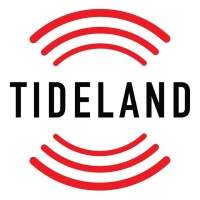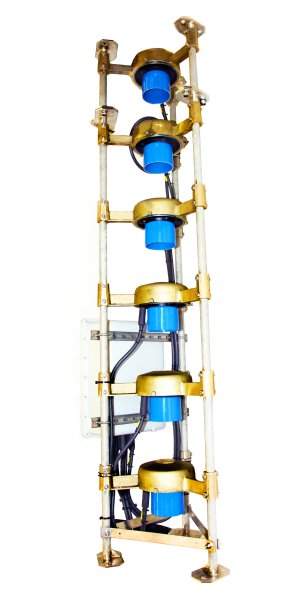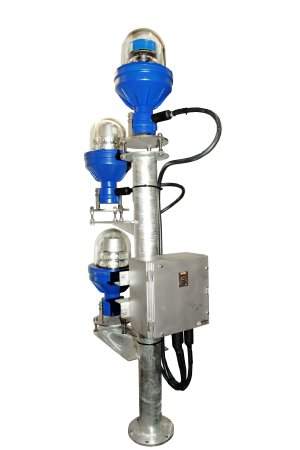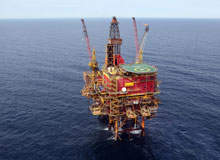Tideland Signal manufactures offshore marking systems comprising marine lanterns (lights), fog signal and radar beacons (racon) for use in hazardous areas that meet the European ATEX Directive 94/9/EC and comply with IALA Recommendations, the UK Standard Marking Schedule, the requirements of the Norwegian Petroleum Directorate, the Danish Marking Requirements and other North Sea regulators.
Marine lanterns and fog signals
Tideland Signal marine lanterns and fog signals are autonomous units. Each has its own U-coder making it independent of a central control panel. This independence makes Tideland Signal’s marine lanterns and fog signals very reliable in service. A central monitoring panel provides system status. It can be supplied in safe area or hazardous area versions.
Having a U-coder in every lantern and fog signal provides flexibility in power supply design allowing for a central battery or where space is limited a system with batteries and chargers co-located with each lantern or fog signal. Tideland Signal has a range of ATEX-certified battery boxes available.
Light station
The light station includes the main 15nm light, a pair of MLED-180HI Ex LED lanterns and the secondary or standby 10mn light. Wired to an Exe junction box ready to accept field cables they are mounted on a stainless-steel or galvanised mild-steel pedestal, forming a single lift structure. The light station has an input voltage of 24VDC, minimising voltage drop and removing the need for inverters.
Main light
The EExde certified MLED-180HI Ex LED main light features a high-efficiency LED flasher head operating at an average power of 40W. A biform arrangement of 2 x MLED-180 HI Ex lights provides a range of 15NM. On board software generates the Morse U code and monitors the critical operating parameters of the flasher. If a failure is detected a secondary lantern is illuminated and an alarm is generated and displayed on the central alarm panel.
Secondary light
The EExde certified MLED-150 Ex LED secondary light is fitted with the MaxiHalo-150 LED flasher providing a range of 10NM. On board software generates the Morse U code and monitors the critical operating parameters of the flasher. If a failure is detected an alarm is generated and displayed on the central alarm panel.
Fog station
The AB68Ex fog signal consists of a vertical array of six TDA24450 driver units sounding in unison to provides usual range of 2NM. To ensure maximum reliability two ECU 800s are used to generate the Morse U code, one duty and one standby. A current monitor will automatically change over from the duty to the standby ECU and report an alarm to the central panel. Any two driver units are sufficient to meet the ½ secondary range requirement.
Subsidiary light
The red 3nm subsidiary light also uses the MLED-150 Ex lantern fitted with a MaxiHalo-150 Red LED flasher.
Monitor and alarm panel
The central panel provides battery charging, DC distribution and the system status via LED indicators. Volt-free contacts are available for connection to a platform DCS or SCADA. The panel also provides photocell and fog signal silent overrides which allow the lanterns to be turned on during the day and the fog signals to be silenced.
We also supply the following optional equipment:
Radar beacon (racon)
The Seabeacon 2 system 6 racon aids identification of the structure to vessels fitted with marine radars by providing an identifying (morse) coded trace on the interrogating radar’s display. The Seabeacon 2 is in wide use all over the world and can be provided in ‘safe area’ and hazardous-area versions.
Fog (visibility) detector
The fog detector provides for automatic control over the fog signal. It can be provided in ‘safe area’ and hazardous-area versions. The fog detector can also be used to override the lantern photocell, turning the lights on during daylight when the visibility is poor and falls below a preset level (usually 2NM).





